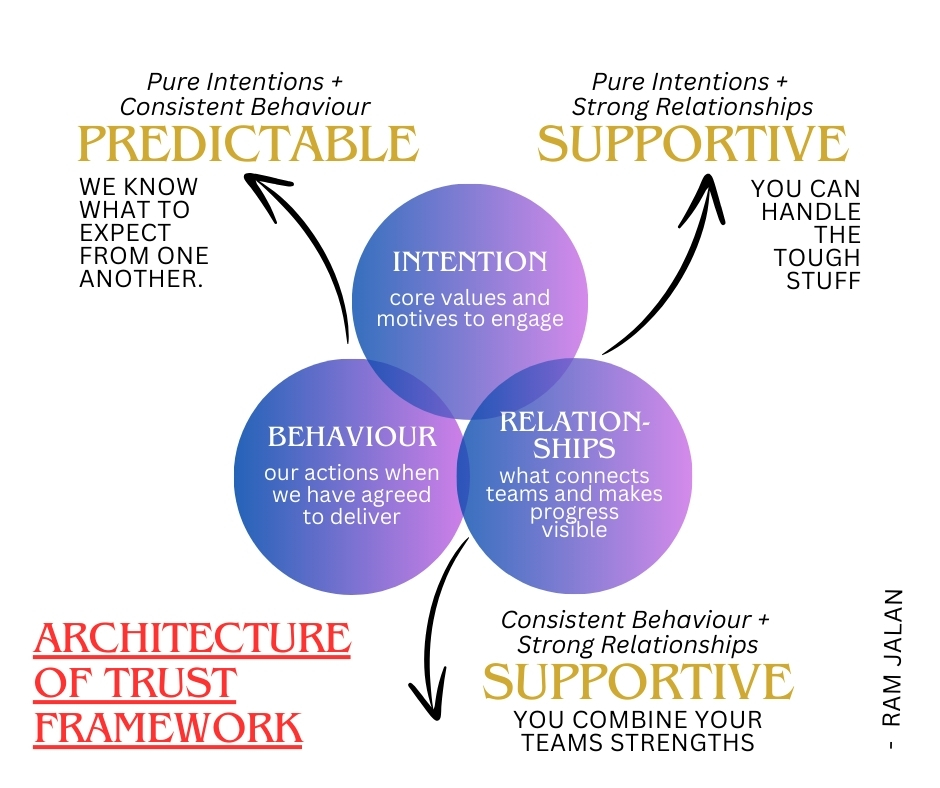“If people like you, they will listen to you, but if they trust you, they will do business with you.”The “people” are your employees. Trust and Transparency is a digital Transformation Challenge.
Digital transformation is an enabler of change, and trust is essential for accepting change; transparency is the foundation of trust. For example, suppose you are deploying a new digital technology to manage employee performance reviews. In that case, you should explain why the change is being made and not only how it will track performance. Otherwise, it may reduce employee productivity because no one loves being tracked. Both employees and the company benefit from the openness of the system.
Trust could be compromised in various aspects of the organisation, including hierarchy, decision-making processes, employee participation, and even payroll management. During my experience at a company, they implemented a “transparent communication strategy” as part of their digital transformation strategy following a merger. As a result, they held frequent town hall meetings to inform staff of the transition’s successes and failures. The transformation process was ultimately more successful since this method promoted employee trust.
Conquering Digital Transformation Challenges Through Transparency
Digital transformation initiatives come with their own set of challenges. Here’s how fostering a culture of transparency can help address internal customer needs:
- Resistance to Change: A transparent approach allows employees to understand the “why” behind the transformation and how it benefits them. This fosters a sense of ownership and reduces resistance.
- Lack of Communication: Open communication channels ensure everyone is on the same page, reducing confusion and frustration.
- Data Silos and Lack of Business Intelligence: Transparency in data sharing empowers employees to make informed decisions and fosters a collaborative environment.
- Misaligned Goals challenge: Clear communication of goals and objectives ensures everyone is working towards the same vision.
- Talent Gaps and Digital Skills Shortages: By being transparent about change management needs, companies can attract and retain talent with the necessary expertise for the digital transformation journey.
Building the Architecture of Trust
Transparency is established on several essential pillars: open communication, decision-making clarity, and celebration of achievements. First, leaders must champion open communication. Regular town halls and team meetings should be forums for disseminating information, actively soliciting feedback, and fostering two-way dialogue.
To cater to diverse preferences and communication styles, embrace a variety of communication channels—video conferencing for geographically dispersed teams, internal forums for in-depth discussions, and chat platforms for real-time collaboration.
Transparency extends to decision-making. While maintaining confidentiality where necessary, strive to explain the rationale behind decisions. This helps overcome cultural resistance, allowing team members to understand the bigger picture and how their work fits the overall strategy.
Finally, celebrate the smaller victories of the transformation initiative. Acknowledge the team’s achievements, big or small. But remember, setbacks are inevitable; treat them as valuable learning opportunities. Organise post-project reviews to analyse key challenges and failures and identify areas for improvement. This fosters a culture of continuous learning and growth, crucial for navigating the ever-evolving digital landscape.
Empowering through Information Transparency
Transparency isn’t just about communication; it’s about empowering employees with the knowledge they need to be successful. Break down information silos and democratise data by providing access to relevant business intelligence. This allows employees to make data-driven decisions and fosters a sense of ownership over digital transformation efforts.
Invest in digital tools. Collaboration platforms that offer real-time project updates, clear task management workflows, and intuitive communication channels create a central nervous system for the organisation. Everyone gets aligned with the digital transformation project, fostering a sense of shared purpose and streamlined collaboration.
Transparency in Performance Measurement
Transparency extends to performance measurement as well. Establish clear, measurable metrics that align with your digital transformation goals. Communicate these metrics openly and provide regular feedback on performance. This empowers employees to understand their contribution and adjust their work styles accordingly.
Ensure psychological well-being.
Building a culture of transparency requires a psychologically safe space—an environment where employees feel comfortable admitting mistakes and offering honest feedback without fear of retribution. Encourage open communication about errors; they are inevitable on the path to innovation. Normalise calculated risks and experimentation. Any Digital transformation initiative thrives on creative exploration, and calculated risks can lead to breakthroughs. Provide the resources and support to learn from both successes and failures.
Everything is not attributed to performance. Many factors contribute to successful transformation. It is important to consider the overall environment and support system in place. Otherwise, employees may be discouraged from taking risks and exploring new ideas, hindering innovation and growth within the organisation. Fostering a culture of learning and adaptability is crucial to staying competitive in today’s rapidly changing business landscape.
The Power of a Joint Business Plan (JBP)
Let us understand the concept. While building a culture of transparency is essential for any organisation, it is particularly significant for family-owned businesses. A strong alignment between family leadership and the broader workforce is crucial for long-term success in such companies. A Joint Business Plan (JBP) can be a powerful tool across all digital initiatives.
A JBP is a collaboratively created roadmap that outlines the company’s goals, strategies, and performance metrics. Leadership fosters a digital culture by involving employees in the JBP development process. Transparency around the JBP ensures everyone understands their role in achieving the company’s vision. This can be particularly beneficial in addressing digital transformation challenges such as:
- Inconsistent Leadership Plans: A JBP serves as a shared roadmap, outlining long-term goals and strategies agreed upon by the Chairman/MD (family leadership) and employees. This reduces the impact of sudden leadership changes as everyone is aligned on the overall vision. Regular reviews of the JBP can ensure continuous adaptation without losing sight of the big picture.
- Disengaged Workforce: A JBP that emphasizes employee ownership through open communication and involvement in decision-making. When employees feel heard and invested in the company’s success, they are more likely to be actively involved in overcoming digital transformation challenges.
The JBP process embodies the principles of transparency and skin in the game across the organization. By leveraging a JBP, family-owned businesses can build a more transparent and collaborative organizational change, leading to a more engaged workforce and sustainable success in the digital age.
Transparency: A Journey, Not a Destination
Building a culture of transparency is an ongoing journey, not a one-time destination. Before implementing the above suggestions, consider evaluating your current trust framework using the provided framework:

In conclusion, honesty isn’t just the best policy; it’s the fertile ground where digital transformation flourishes. Remember, fostering transparency is an investment in the future. Happy to speak to you and exchange notes on your digital transformation journey culture for your organisation.
If you want to read further, here is an interesting piece on Forbes on Transparency in Leadership.






